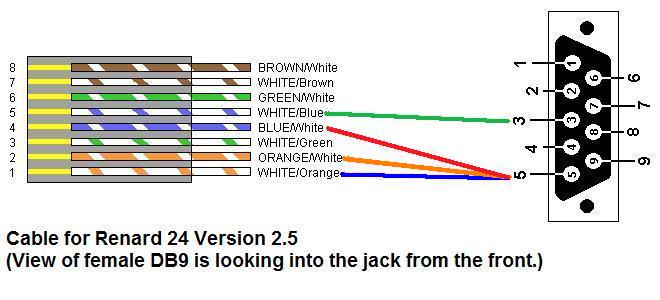

Step 6: When you create and then test a physical loopback.Īll in all, loopback cables play an important role in troubleshooting in laboratories and manufacturing environments. Step 5: Insert plastic tubing over the wire and into the RJ-45 end. Redirect Pin 4 to Pin 8 and Pin 5 to Pin 7 for a Gigabit Ethernet RJ-45 loopback cable. Step 4: Insert cable into RJ-45 end (Do not crimp yet). Line up the cables so that the cables are in the proper alignment to prepare for insertion into RJ-45 end. Step 3: After twisting is done, fold cable and line up the ends. If the twists are not close enough, the loopback will not work. (Note: You’d better use a tool to help with the twisting in order to avoid hurting your fingers. Step 2: Leave approximately 1/2 inch at end and start twisting, very tightly. (Make sure you create tight twists to account for signal interference at such a short length.)

Step 1: Get a pair of approximately 4 inches in length of Cat5 cable. The following illustrated steps are to create a loopback cable for an RJ-45 Ethernet interface: If a field engineer is not available to create the physical loopback, you can configure a local loopback for the interface. This action is recommended because it allows you to test and verify the transmit and receive ports. To create a physical loopback cable can help to diagnose a suspected hardware problem. When selecting a suitable fiber loopback for the transceiver, we should consider the connector type, polish type, and cable type. Fiber optic loopback testing is the easiest way to ensure that the transceiver works faultlessly.

Then we can compare the transmitted pattern with the received pattern to troubleshoot a defective node in the network. Thus, during the testing process, the loopback cable directly routes the laser signal from the transmitter port back to the receiver port. When performing the loopback test, the fiber loopback cable can be directly plugged into the output and input port of transceiver module respectively (the ports at the ends of the connection must be compatible). The former one is to send out laser signals and the latter is to receive signals. As we all know, transceiver module has two ports, a transmitter port and a receiver port.
#Rj45 loopback plug serial#
There are loopback plugs for many different ports, including serial ports, Ethernet ports, and WAN connections.įiber loopback cable is often utilized to check whether the transceiver module is working perfectly as designed. In a word, it is a connection device that is plugged into a port to perform a loopback test. It provides system test engineers a simple but effective way of testing the transmission capability and receiver sensitivity of network equipment. The lookback cables can provide a simple and effective means of testing the capabilities of the network equipment, and they are typically used for fiber optic testing applications or network restorations.Ī loopback cable is also known as loopback plug or loopback adapter, which is a plug used to test physical ports to identify network issue. Do you know the loopback cable can be acted as a test tool in the telecommunication? Absolutely, the loopback signal is used for diagnosing the networking problem. For testing applications, there are many tools for this function, such as visual faults locator, optical power meter, OTDR, etc.


 0 kommentar(er)
0 kommentar(er)
